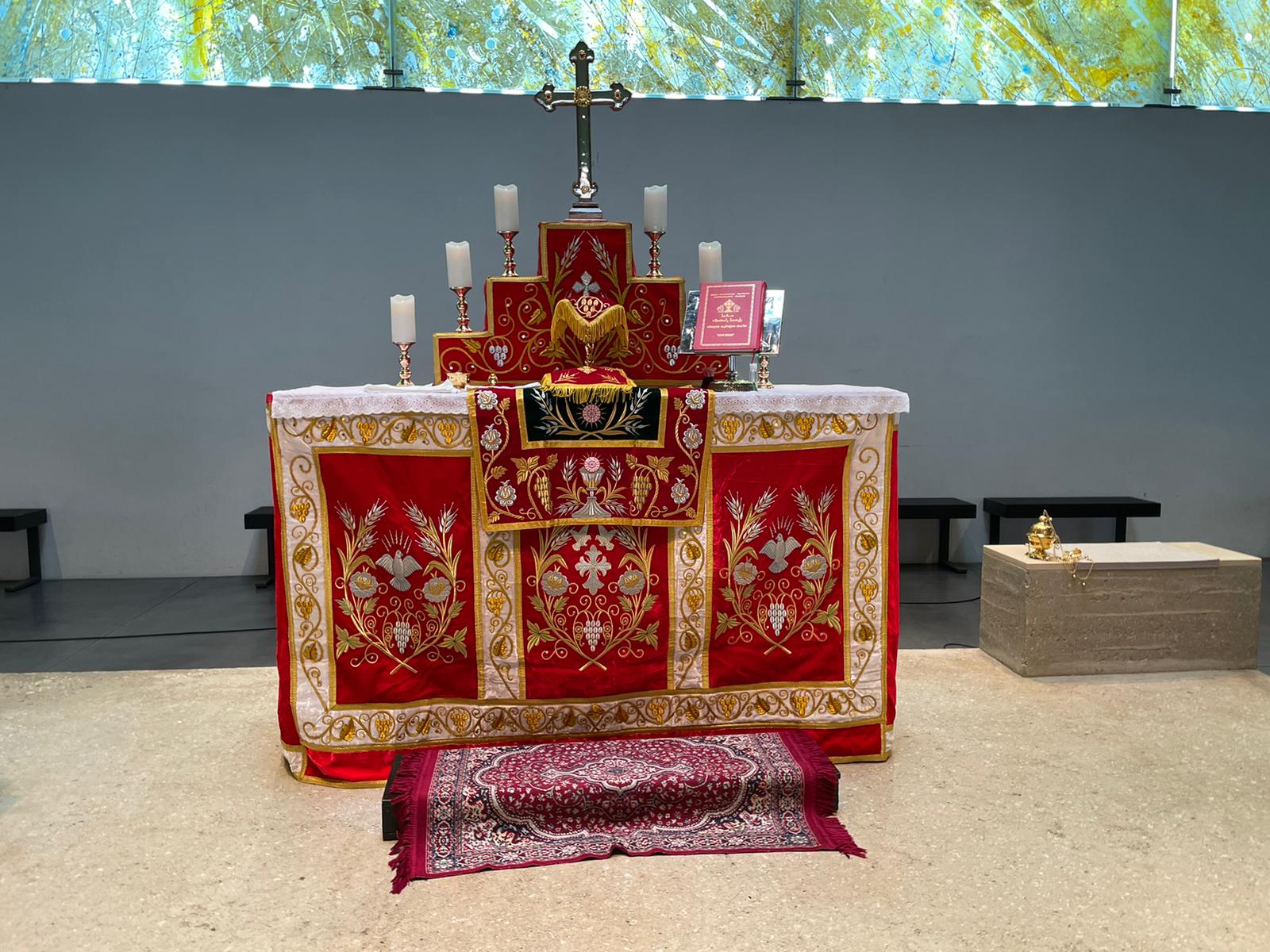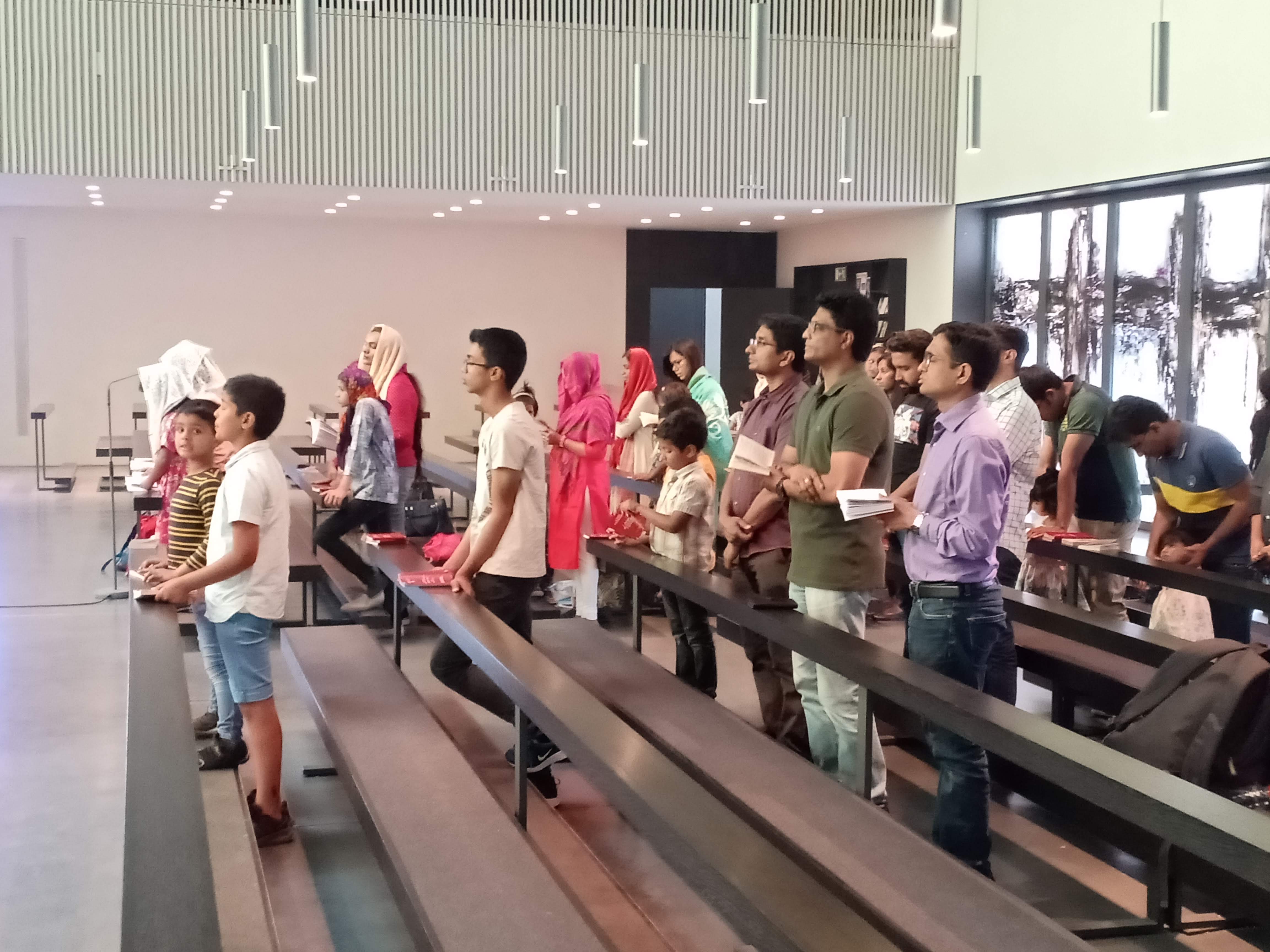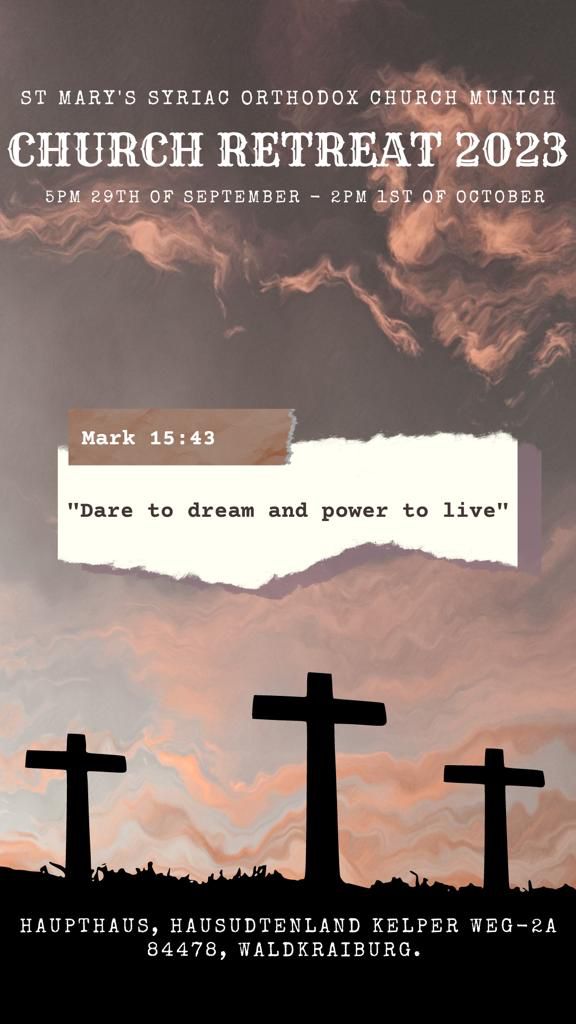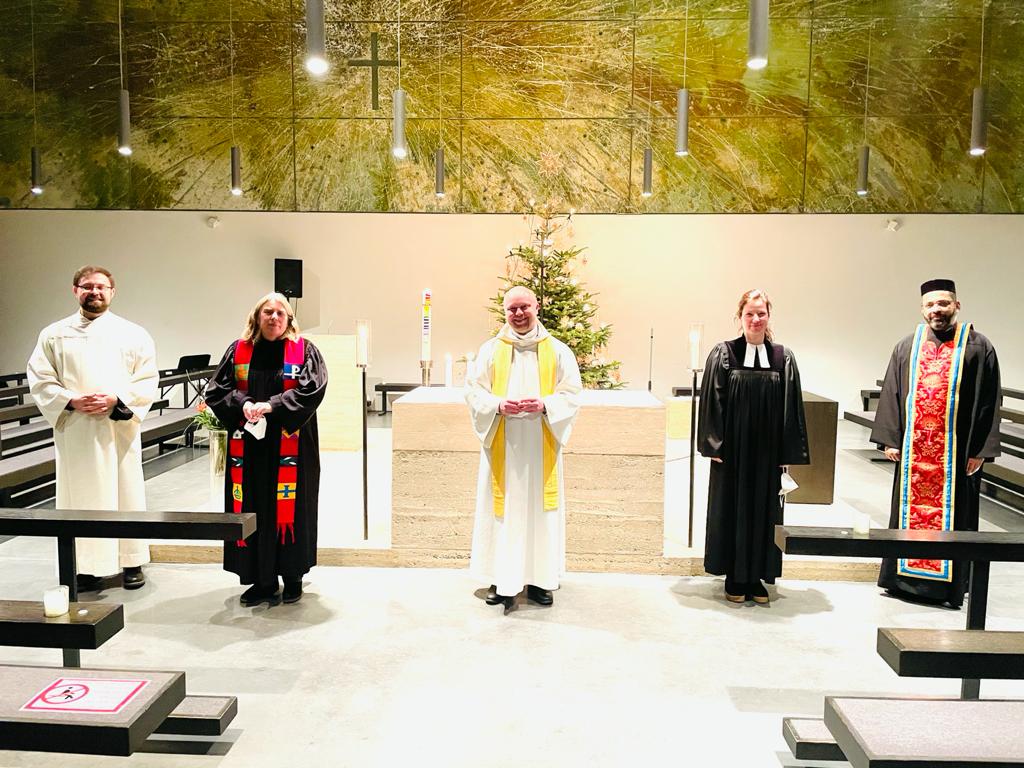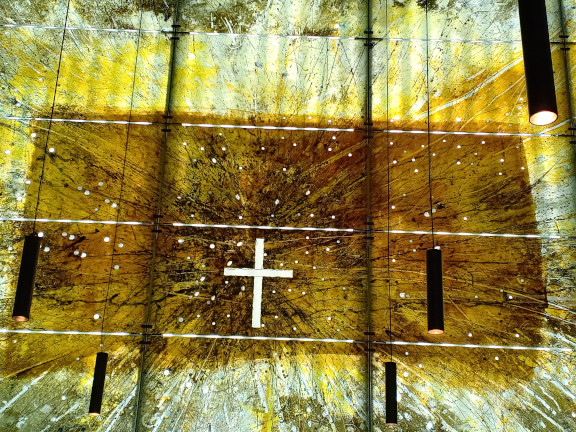Service Times: Every first and third Sunday of the Month at 13:30
Pfarrkirche St. Florian, Platz der Menschenrechte 2, 81829 München
Welcome To Our Church!
"I will lift up the cup of salvation and call on the name of the LORD"
- Holy Qurbono - Every 1st, 2nd and 3rd Sundays at 13:30
- Sunday School - Every Sunday
- House Prayer Meeting - Every 2nd Saturday from 5:00 pm to 7:00 pm
- Christmas Service - The Christmas Carol and Holy Service will be held on 25th December at 1:30 pm
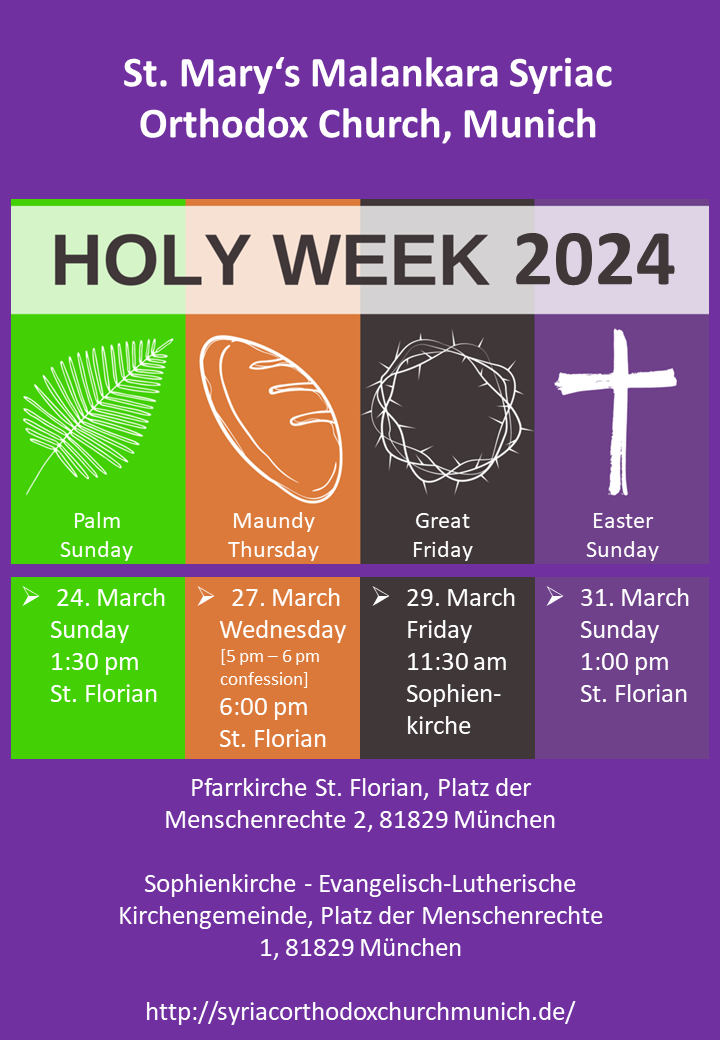
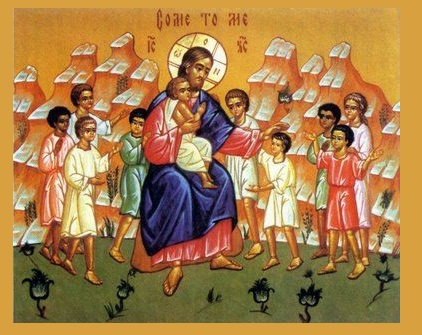
Sunday School
Train up a child in the way he should go,And when he is old he will not depart from it. Proverbs 22:6
We are grateful for the dedicated service of the twelve Sunday School teachers in our church.
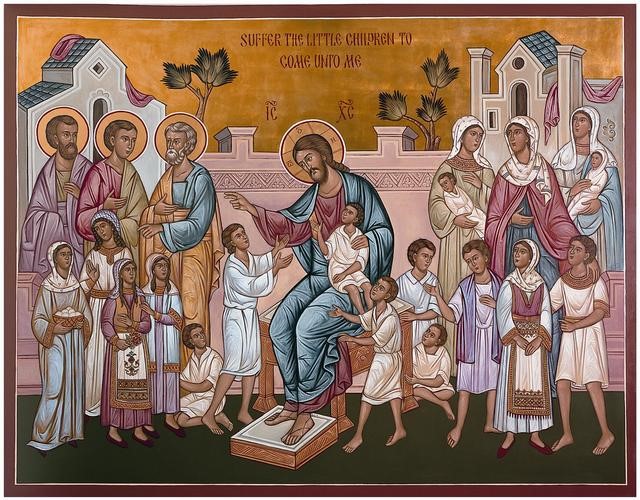
Youth Ministries
Remember your Creator in the days of your youth, before the days of trouble come and the years approach when you will say, “I find no pleasure in them" Ecclesiastes 12:1
Though we are limited in number, we are particular of keeping the Christian unity and growing in the church fellowship. We especially organize classes to promote the orthodox spirituality and bring the teachings of the early church fathers among the youth. We take initiative in conducting the liturgy in English.
Office Bearers: Secretary: Rohit George Sanjay, Trustee: Sophia Mary Varghese.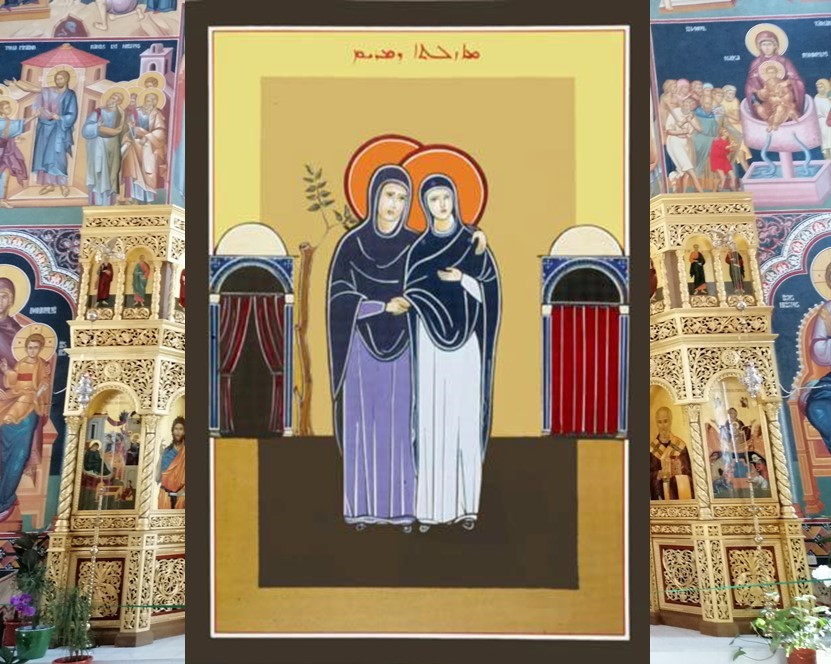
Women's Association
Our Women’s Association is very active in doing spiritual and social ministry. Their dedicated service in Sunday School and organizing food trains for the sick and those, who are in need, are well appreciated.
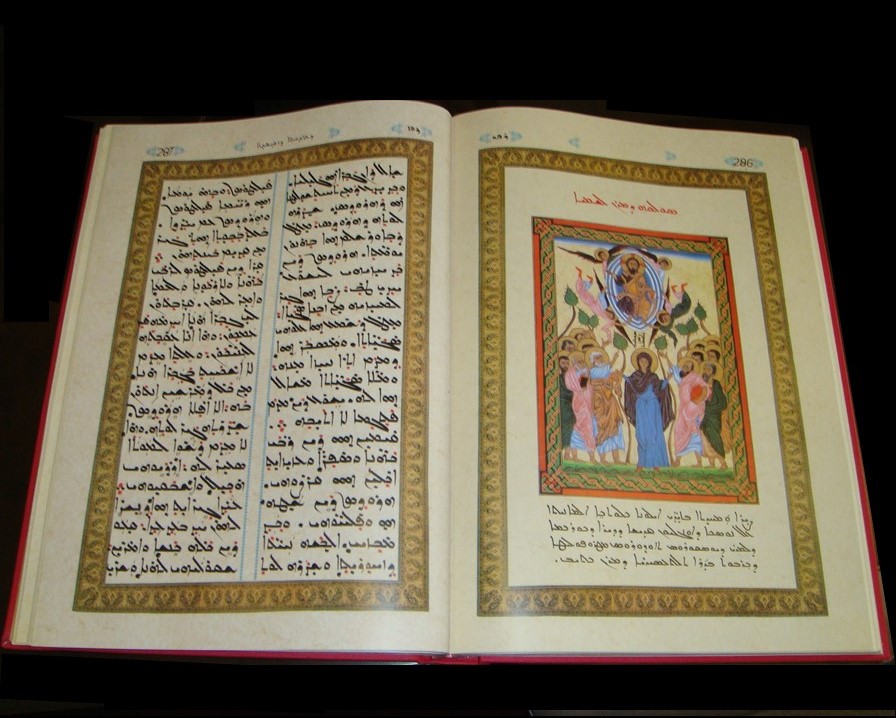
Prayer Meetings
House Prayer meetings are held every second Saturday in the month.- Home
- Register
- Login
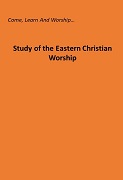
Come, Learn And Worship
- Details
- Created: Wednesday, 02 June 2021 03:44
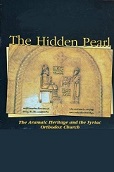
I'm New Tell Me More
- Details
- Created: Wednesday, 02 June 2021 03:44
- The Syriac Orthodox Church
- Indian Church History
- The Joy of Freedom (Eastern Worship and Modern Man)
- Light to the Nations (An elementary study of Church, Ministry and Sacraments)
- Radiance of Faith (Orthodox Christian Apologetics)
- Cloud of Witnesses (A short study of the builders of Christian Tradition)
The Syrian Orthodox Church of Antioch At A Glance
Patriarch Ignatius Zakka I Iwas, 1983The Syrian Orthodox Church is the Church of Antioch, whose foundation goes back to the very dawn of Christianity, when Antioch was the capital of Syria1 and one of the three capital cities in the Roman Empire.2 The gospel was first preached in Antioch by some of Christ's own disciples who fled Jerusalem after the Jewish persecution. Following the martyrdom St. Stephen the deacon ca. 34 AD., Antioch was visited by Barnabas, one of the seventy preachers, as well as St. Paul the Apostle. Both stayed in Antioch for an entire year preaching the gospel after St. Peter who preached the gospel there and established his apostolic see ca. AD. 33.
According to some historians, the conversion of the city of Antioch itself was carried out by St. Peter the Apostle in two stages: the first was the conversion of the Jews from whose ranks the Christian Church was established;3 the second was the conversion of the pagans who included Aramaeans, Greeks and Arabs. This took place after the settling of the case of Cornelius and his acceptance in the church.4
As we go through the events recorded in the New Testament, we find that during St. Peter's second visit to Antioch, he refrained himself from mingling with the converted gentiles, even after their baptism because of his fear of the Christians in Jerusalem who had contended with him regarding the reception of Cornelius. However, St. Paul opposed him publicly.5 Further, some of the Jewish converts compelled the gentile converts to be circumcised so that they might become Jews before becoming Christians. In order to settle this problem, a council was held in Jerusalem in 51 A.D. and the following message was sent to Antioch through Paul and Barnabas accompanied by Judas, surnamed Barnabas, and Silas: "For it has seemed good to the Holy Spirit and to us to lay upon you no greater burden that these necessary things: that you abstain from what has been sacrificed to idols and from blood and from what is strangled and for unchastity" (Acts 15: 28-29). This event points out the importance of the Syrian Church of Antioch during the early days of Christianity.
The Book of Acts witnesses the earnest zeal of the members of the Church of Antioch and their care for their fellow Christians. They collected alms and sent them with Barnabas and Saul to the poor in Jerusalem. The book of Acts also testifies that it was in Antioch that the disciples of Jesus Christ were first called Christians.6
When Peter and Paul had to leave Antioch on preaching missions, they appointed two bishops to take care of the faithful, Aphodius who was assigned for the Christians of pagan origin, and Ignatius the Illuminator for those of Jewish origin. 7 In 68 A.D., Ignatius the Illuminator became the sole bishop of Antioch. It was he who called the Church of Antioch 'The Universal Church,' since it comprised both of the gentiles and the circumcised. Hence, Ignatius of Antioch was the first to apply the adjective 'universal' to the Christian Church.8
The Syriac Language in Antioch
The Syriac language is the Aramaic language itself, and the Arameans are the Syrians themselves. He who has made a distinction between them has erred. Throughout the old times, the name Syriac appeared along with the name Aramaic in describing the speakers of that language; hence it is a linguistic name. Following the spread of Christianity, the name Syriac came to be preferred over the name Aramaic. The disciples, the first preachers of Christianity, were Syriac-speakers. In the early centuries, when it was revealed that the disciples spoke Syriac, every Aramaean who accepted their teachings and became a Christian changed his original Aramaic identity to a Syriac one. He would be proud to be called a Syriac. As a result, the name Syriac came to imply the Christian faith, while the name Aramaic had a pagan connotation. This is evident from the Syriac translation of the Bible, known as the "Peshitto" or 'simple', which used the name Aramaic to distinguish a pagan from a Christian.9 This is how the use of the term Aramaic to refer to Christians almost vanished in the land of Aram to be replaced by the term Syriac which became synonymous to Christianity.
Hence, the term 'Syrian Church' means the Christian Church. The Syriac language is also known as the Aramaic. Originally it was the language of the Arameans10 who had settled since the l5th century BC in the lands of Aram-Damascus and Aram-Naharin (Mesopotamia).11
The Aramaic language had spread far and wide in the ancient world, to the extent that the alphabets of many other Oriental languages were derived from Aramaic.12 During the reign of King Nabo Blassar, it was the official language of the Babylonian Court, and during the reign of Darius the Great (521 - 486 BC), it was the official language between the various districts of the Persian Empire.13 It had become a lingua franca or 'an international language'14 across the entire East for a long period of time. The Jews had learned it and used it since the Babylonian conquest in the fifth century BC as their common language replacing their own Hebrew language which they had forgotten. Jesus Christ and his disciples spoke Syriac as well.15
Thereafter, Syriac remained dominant over a large section of the Orient, until the end of the 7th century AD when Arabic became popular and Syriac started to decline gradually.16 Some of its dialects, however, are still being used in Tur Abdin, Turkey, the villages around Mosul and other villages in Northern Iraq and in Ma'lula, a village near Damascus, Syria. The trace of its influence is obvious today in the name of several cities and villages in the Middle East and in their common dialects.17
At the dawn of Christianity, Syriac was the mother tongue of the original inhabitants of Antioch, especially of those living in its suburbs, as well as those in the interior parts of Syria.18 Syriac was also the language of the Jewish immigrants in Antioch, whereas Greek was the language of the colonists of the Greek community brought in by the Seleucids.19
The historian Dr. Philip Hitti states that the English name 'Syrian', in its linguistic sense, refers to all the people who speak Syriac (Aramaic), among them those in Iraq and Iran. In its religious sense, it refers to the followers of the Ancient Syrian Church, some of whom are in Southern India. For a Roman, 'a Syrian' (Syrus) meant any person speaking Syriac.
The Church of Antioch used the Syriac language in its religious rites. She celebrated the first Eucharist20 using the Syriac liturgy written by St. James, the brother of our Lord, Archbishop of Jerusalem. This same liturgy is used in the Syrian Orthodox Church all over the world to this day. Today, the liturgy is usually celebrated in Syriac as well as in local languages. Many of the church fathers wrote their religious and scientific books in Syriac.21
Ecclesial Status of the Church of Antioch
The Church of Antioch is considered to be the most ancient and widely known of all churches after the Church of Jerusalem. After the destruction of Jerusalem in 70 AD by the Roman Emperor Titus, the Christians in Jerusalem were scattered and many made their way to Antioch. It was from Antioch that the disciples went to the then known parts of the world, spreading the Gospel and establishing churches, monasteries and schools. These monasteries and schools produced many illustrious scholars who enlightened the world with their religious and scientific achievements.22 The fathers of the Syrian Church of Antioch made great and memorable contributions in the study of the Holy Bible, both Old and New Testaments. It was their translation of the Holy Bible into the Syriac language that came to be known as (Peshitto) or 'simple'. They also translated the Bible into Arabic,Persian and Malayalam (a South Indian language).23 Their work was not limited to translation; it included commentaries and exegesis of the Holy Scriptures. They have left behind them a rich heritage that should be counted as unique by today's scholars. This church played a great role in spreading the Gospel to many nations of the world such in Arabia, Armenia, India, Ethiopia. In the process, it suffered the loss of thousands who laid down their lives as martyrs for the faith.24
Establishment of the See of Antioch by Peter the Apostle
Reliable historians such as Origens (d. 256 AD) Eusebius of Caeserea (d 340 AD), John the Golden Mouth (d. 407 AD), Hieronymus ( d. 420 AD ) and Mar Severius of Antioch (d. 538 AD ) have all commented on St. Peter's efforts in Antioch, where, as mentioned earlier, he established the Apostolic See. He was the first of its patriarchs to whom the line of succeeding patriarchs is traced. Eusebius of Caeserea25 notes 'In the fourth year after the Ascension of Jesus Christ, St. Peter proclaimed the word of God in Antioch, the great capital, and became its first bishop."26 He also tells us in his Ecclesiastical History, "Ignatius became famous and was chosen to be the Bishop of Antioch and the successor of St. Peter."27 In his Calendar of Feasts, Hieronymus28 fixed the 22nd day of February as the day of the establishment of the See of St. Peter in Antioch. The Catholic Church still celebrates this feast on this same date.29
We can, therefore, surmise that St. Peter was the first Patriarch of the Apostolic See of Antioch. He had many illustrious successors, including St. Ignatius. This succession has remained unbroken until the time of the present patriarch, the author of this treatise. He is the 122nd in line among the legitimate patriarchs.
Headquarters of the See of Antioch
The headquarters of the See of Antioch was in Antioch until 518 AD. On account of many historical upheavals and consequent hardships which the church had to undergo, it was transferred to different monasteries in Mesopotamia for centuries. In the 13th century it was transferred in the Monastery of Deir Al-Zaafaran, near Mardin, Turkey. In 1959 it was transferred again to Damascus, Syria.
The Name of St. Ignatius taken by the Patriarchs of Antioch
In the early centuries, the Patriarchs of Antioch had kept their original names, even after their enthronement. However, when Patriarch Yeshou was enthroned in the year 878 AD, he adopted the name Ignatius out of veneration for the great martyr Ignatius the Illuminator, the second patriarch after St. Peter. Four other patriarchs followed his example. When Patriarch Yousef, son of Weheb, Bishop of Mardin was installed Patriarch in 1293 with the name Ignatius, the custom was confirmed and it has remained a continuous tradition in the Syrian Orthodox Church to this day.
The See of Antioch and its Relation with the Other Apostolic Sees
According to the canon law which took shape in the first centuries of Christianity, the bishop of a main city (Metropolis) was named Metropolitan, which means the bishop of the capital city or the pedestal of the kingdom. Through various regional and ecumenical councils, the bishoprics were eventually attached to the archbishoprics and the great and equal apostolic sees were recognized to be Antioch, Alexandria and Rome. At the Council of Constantinople in 381 AD, the See of Constantinople was added to those three. The four sees attained high status due to the political importance of their respective cities and their strategic locations.30 In the middle of the 5th century, the bishop of each of these cities was named patriarch, which means the head of fathers.31 Every See had its own jurisdiction and all the churches within it were subjected to its religious authority through the local seats (centers of bishoprics and archbishoprics). In 325 AD the Council of Nicea specified the authority of each of these sees, stating: "Preserve the old custom in Egypt, Libya and the five cities, since the bishop of Alexandria had authority over all of these places, as the Bishop of Rome had also the same authority. Also the dignity of the churches in Antioch and the rest of the bishoprics must be kept fully intact".32 The Council of Nicea did not create these privileges, but merely confirmed them.33
Fellowship of Faith and Authority of the Councils
The four Sees of Antioch, Rome, Alexandria and Constantinople were identical in faith and doctrine, as well as being equal in their authority and privileges. It was a custom for the occupants of these sees to exchange, upon their election, copies of their creeds in order to receive the right of fellowship. The receipt of this right of fellowship, however, was not considered as the installation of the patriarch in his position, but was merely a necessary requirement to exercise his authority legally.34 The historical events testify to the fact that these four great sees were not only autonomous,35 but also autocephalous,36 which means that none had authority over the other and none could interfere in the affairs of the other. In the case of bishops, no bishop could interfere in the affairs of another. Whenever a local, internal problem or dispute arose between the bishops of an archdiocese, a regional council of bishops, under the chairmanship of its archbishop would be convened to settle the matter. The council was considered above the bishops and as the highest authority in the whole archdiocese. If any major problem or grave situation relating to the faith emerged, a general or ecumenical council37 was convened, whose authority was above all the bishops and archbishops, including the bishop-patriarchs of the four great sees. Since all the bishops over the world were invited to such a council and had the right to take part therein, and as no one was to be absent, except for genuine reasons, the universal church was represented fully. As a consequence, all the bishops had to accept the decisions of that council and enforce them in the whole church. This council was considered as the supreme authority in the whole church.38
No bishop, even the patriarchs of the four great sees, had authority to take action in any major faith issue individually since that was the responsibility of the ecumenical councils. Contradiction of opinions and diversification of decisions taken by the regional councils relating to matters of faith often confused the universal church. When such cases were discussed in the ecumenical council, the council would pass its judgment which would be accepted by the universal church as if it were a divine decision. Councils of this type were convened to authenticate the genuineness of the true faith and to reject heresies. The declarations of faith in the Nicean creed, for example, were included in the writings of the fathers in detail and were accepted by the church since its dawn. The council, however, formulated it very clearly and asked the faithful to stand by its terms, or else they would be subjected to excommunication.39
Division among the Four Great Sees
In 451 AD the Council of Chalcedon40 was convened. It resulted in the division of the apostolic sees into two groups. The Sees of Rome and Constantinople became one group, while the Sees of Antioch and Alexandria formed the other. The latter two Sees remain united in faith to this day, with each having its own leadership and absolute independence as was the case since the beginning of Christianity. The former two sees of Rome and Constantinople split from each other in the 11th century AD.
Jurisdiction of the See of Antioch
The pontiff of the See of Antioch had always had a prominent position in the church. His religious authority extended from the Greek Sea in the West to the far end of Persia and India in the East, and from Asia Minor in the North to the frontiers of Palestine in the South.
The church of Antioch was one and was headed by only one patriarch. There was no other one besides him in all the Eastern Countries42. His jurisdiction extended over the lands of Damascus, Palestine, Cilicia, Mesopotamia parts of Asia Minor and all of Persia.43 His authority was dominant over all the Christians in these districts, irrespective of their nationality, race or language. The larger dioceses had archbishops, while the smaller ones had bishops who took care of their spiritual administration. They were all obedient to him.44
Maphrianate of the East
The countries which were lying beyond the Eastern boundaries of the Roman Empire were known as the East, from which, at the time of Jesus Christ, under the Persian rule, the Magis came to Bethlehem and presented their gifts to the Lord.45 When they returned to their countries, they proclaimed the news of Jesus' birth. As there were Jewish communities in the East, some of them might have been present in Jerusalem on the Day of Pentecost. The Book of Acts identifies Parthians, Medes, Elamites and the dwellers of Mesopotamia.46 It is beyond doubt that some of them who believed in Christ conveyed the Gospel to their countries.
Church history records that Addai, one of the seventy preachers, was sent by his brother, the apostle Thomas, to Edessa, capital of the Abgarite Kingdom, and cured its king Abgar V from leprosy and converted him together with all the inhabitants of the city. Then Addai preached in Amed (Diarbekir), in the South of Arzen, in the Eastern valley of the Tigris River, and in Bazebdi. After which he came to Hidiab (Arbil),47 where he settled down with his friend Mari, preaching the Gospel. The Syrian historians: Mor Michael the Great, Bar `Ebroyo and Bar Salibi add that the apostle Thomas passed through these places and preached their inhabitants on his way to India. This is how Christianity spread since the first century all over the East, where churches were built and bishoprics established.
During the third century, a number of bishoprics were gradually organized and a general leadership was established, with Madaen as its center, in the ecclesiastical region under the jurisdiction of the Apostolic See of Antioch.48 Its bishop was called Bishop of the East, or Catholicos of the East, and was later known as the Maphryono49 of the East.50
The Catholicos of the East had general authority over the churches in his district, in collaboration with the Patriarch of Antioch. The political situation hindered this relation since the headquarters of the See of Antioch was within the Roman Empire, while the East was subject to the Persian rule and the enmity between the Persians and the Romans was severe.51
In 431 AD the Council of Ephesus excommunicated Nestorious, Patriarch of Constantinople. A number of bishops from Syria together with the majority of the teachers and students of the School of Edessa aligned with him. Hence, Nestorious' teachings were spread in the East with the exception of Tikrit and Armenia. The result was the division of the Syrians, from the religious and doctrinal points of view, into two groups. This division affected even the Syriac language which came to be distinguished in its phonetic and calligraphic styles, known as the Western style and the Eastern style. The Western style was used in the land of Damascus [Syria] and the Eastern style in the lands of Mesopotamia, Iraq and Azerbejan. The Eastern group cut off its relations with the See of Antioch, with the exception of the Orthodox people in Iraq52 who remained loyal to the Apostolic See of Antioch, enduring great hardships as a result. In the year 480 AD, Barsouma, the Nestorian Bishop of Nusaibin, slandered against the faithful orthodox of the East to Fairouz, the Persian king, accusing them of spying in the interest of the Byzantine Kingdom. As a result, Fairouz slaughtered many of them shedding their innocent blood. After the death of Barsauma, the Armenian Catholicos Christophorus visited the East and consecrated a monk by the name Garmai as bishop in the Monastery of St. Matthew and gave him authority to consecrate bishops, as the Catholicos of the East. Christophorus also consecrated Monk Ahodemeh as bishop at Baerbye.53 In 559 AD, Ya`qub Burd`ono visited the church in the East and consecrated Ahodemeh as General Bishop who became the first General Bishop of the East, after the Nestorians had captured its See. 54
In 628, a reconciliation was reached between the Persian and Roman Empires. Patriarch Athanasius I (595-631) sent his secretary Rabban (Monk) Youhanna to the East. He met with Bishop Christophorus, head of the Monastery of St. Matthew and discussed with him the subject of resuming relations between the See of Antioch and the Church in the East. The bishop convened a synod which was attended by Monk Youhanna and four regional bishops. They elected three monks, Marotha, Ithalaha and Aha, and requested the patriarch to consecrate them bishops. The patriarch accepted the request and honored the old custom of the Church of the East which allowed three bishops in the absence of the Catholicos to consecrate a new bishop in dire circumstances.
The Eastern bishops consecrated the chosen monks as bishops in the presence of the patriarch's envoy. The patriarch then installed Marutha, one of the three new bishops, as Bishop of Tikrit, and gave him authority to preside over the East, on his behalf. The above incident indicates that the Church in the East was autonomous and that its Catholicos who was installed by the patriarch had authority over all its bishoprics. Also we can see in the history of the church that the Patriarch was enthroned by the fathers of the church with the cooperation of the Catholicos. Several attempts have taken place for infringing this tradition.
Mar Marotha of Tikrit (d. 649) was the first to be called Maphryono. From him the Maphrianate took its line of succession. It is worth mentioning that the bishoprics of the East increased in number and prestige to the extent that they outnumbered the dioceses of the See of Antioch during the time of Mor Gregorios Bar `Ebroyo who himself was a Maphryono of the East (1264-12861). Bar `Ebroyo is considered to be one of the most famous and scholarly Maphryonos of the East.
The headquarters of the Maphrianate was first in Tikrit and remained there until 1089 AD. Subsequently, it was transferred to Mosul, and then back to Tikrit where it remained until 1152 when it was transferred to St. Matthew Monastery, near Mosul. For sometime the Maphrianate was at Bartelleh near Mosul and then was brought back to Mosul.
In the past, it was the custom to have the Maphryono keep his episcopal name, even after his installation. But since the 16th century, the name Baselios was added to his original personal name. In the year 1860, after the death of Maphryono Mor Baselios Bahnam IV of Mosul, the Maphrianate was abolished by a decision of a synod.
Reinstatement of the Office of the Maphrianate
On May 21, 1964, the office of the Maphrianate was reinstated according to a resolution of the synod held at Kottayam, South India. It was presided by H. H. Mor Ignatius Ya`qub III, the late Patriarch of Antioch and All the East, and attended by all the bishops of the Syrian Church in India and three bishops from the Middle East who had accompanied His Holiness on his apostolic visitation to India. The author of this book was one of those three bishops. It was decided that the headquarters of the Maphryono should be in India and that the jurisdiction of the Maphrianate is limited to India and to the East of India only.55
Since 1964, the Maphyono is elected by the local Holy Synod of the Syrian Church in India and installed by H.H. the Patriarch of Antioch and All the East who is the Supreme Head of the Universal Syrian Orthodox Church. He represents the Syrian Orthodox Church in India in the Universal Synod of the church when it is convened for the election and enthronement of a patriarch. The present Maphryono is H.B. Mor Baselios Paulose II [d. 1996].
Schisms in the Church of Antioch
The Church of Antioch (Syrian Church) endured in its history many painful incidents that divided its flock into several sects at different times. These incidents, a few of which will be briefly discussed, weakened the church in many ways.
In 431 AD the Council of Ephesus rejected the teachings of Nestorius, Patriarch of Constantinople, who claimed that there were two separate persons and natures in Christ. Patriarch Yuhanna of Antioch supported him. He was succeeded by his nephew Domnos who unfortunately accepted that same heresy. He was deposed in the year 449 AD by the second council of Ephesus and was replaced by Maximus. The teachings of Nestorius were accepted by some Syrians in the Persian Empire, some parts of Syria, Palestine and Cyprus. Those formed a church breaking away from the See of Antioch in 498 AD. They chose a leader for themselves who called himself Catholicos. Their first Catholicos was Babai who had his headquarters in Selucia, Near Madaen in Iraq. This was later transferred to Baghdad in the year 762 AD. At the beginning of the 15th century it was shifted to Al-Kosh and in 1561 to Erumia,1 both in Iraq.
As a result of the Council of Chalcedon in 451 AD, the four great sees were split into two groups and confusion dominated over the church weakening its discipline. Illegal interference took place in several bishoprics and fishing in troubled waters was considered a great gain. The Roman See was able to win a Nestorian bishop called Timotheos, Bishop of Cyprus. In 1445 AD he joined the Catholic Church with a group from his church. It should be remembered that this group comprised members of the Syrian Church who had already embraced the Nestorian ideas. Pope Ojanius IV declared: "It is henceforth forbidden to treat those Syrians who had left Nestorianism and joined the Roman Church as heretics, but they have to be distinguished with the particular name of Chaldeans."56 Five years later in 1450 AD, they returned to their Church. But disputes soon arose in that church when Patriarch Shemoun's Synod passed a resolution to the effect that no patriarch should be installed from outside his own tribe. When this decision was taken by Shemoun's Synod, a rebel synod which opposed Shemoun was convened in Mosul. A great number left Shemoun and joined the Roman See in 1553. Accordingly, Pope Julius III consecrated for them Patriarch Yuhanna Sulaqa. This split did not last long since Patriarch Yuhanna Sulaqa was killed in 1555 AD and the relation with the Roman See was severed.
Until 1827, there were two patriarchs for the Chaldeans, one of whom was called Patriarch of Amed, and the other, Patriarch of Babylon. In that same year, the distinction between the two Patriarchates of Amed and Babylon was abolished by Pope Leo XII. As of 1830, that is from the time of Patriarch Yuhanna Hermezd, there was only one patriarch who was called the Patriarch of Babylon. Yuhanna Hermezd was the first patriarch of the united Patriarchate of Bayblon. In the middle of the 19th century, Patriarch Yousef Odo57 who, unlike his predecessors, was known to have liked the Oriental Church and its ancient traditions, was installed as the Patriarch of Babylon.
Turning back to the See of Antioch, we shall see that since the time of Maximos (449 A D. - 512 AD) it was usurped by patriarchs who had followed the formulation of the Council of Chalcedon and by others rocking from one side to the other. During this critical period, the famous Patriarch Peter II the Fuller was installed to the Holy See of Antioch.
In 512 A D. Mor Severius was enthroned as the Patriarch of Antioch succeeding Philibianos who was deposed because of his unsteadiness of faith. Mor Severius ruled the holy see in peace until 518 when he was sent into exile. When the Orthodox Emperor Anastas died, he was succeeded by Justinos I who was a supporter of the Council of Chalcedon.
He sent into exile most of the orthodox bishops including Patriarch Mor Severios who died in the year 538 while in exile in Egypt. Mor Serjis succeeded Mor Severios to the Holy Throne of Antioch. Through all these great storms, the See of Antioch struggled hard to keep the succession of its patriarchs to this day.
The followers of the Council of Chalcedon seized the opportunity of the exile of Mor Severious to install from among themselves patriarchs with the title of "Patriarch of Antioch". From this time (518 AD) the series of Byzantine Patriarchs started. The most famous of these patriarchs was Ephrem of Amed. Most of those Byzantine Patriarchs were Syrians and others from Greek colonies. Those patriarchs and their followers were called "Melkites", i.e., 'followers of the king.' They were called so since they followed the doctrine of the Council of Chalcedon which was upheld by the then king. They used the Syrian rites until the 10th century when they changed to the Greek rites. But, because of their ignorance of Greek, they used the Syriac translation of the Greek rites. In later centuries, after they learned Greek, they started to use the Greek rites both in Greek and Arabic. They collected the Syriac codices, which were preserved in the library of St. Mary's Monastery (a Syrian Monastery which the Greeks later occupied), in the village of Saidnaya, near Damascus and burned them.58
At the beginning of the 7th century, a dispute arose among the followers of the Council of Chalcedon within the jurisdiction of the See of Antioch, because of the emergence of a new dogma of two wills in Jesus Christ. It resulted in a division among the Maronite monks in Lebanon leading to the establishment of a separate Patriarchate. In the 12th century, they joined the Roman See59 and started calling their Patriarchate the "Patriarchate of Antioch".60
There were further new Patriarchates of Antioch splintered from the original Patriarchate of Antioch. At the beginning of the 17th century, through the influence of some Capuchin monks, and with the assistance of the French Consul, a group in Aleppo, Syria, left the Holy See of Antioch. They approached a Maronite bishop in 1657 to consecrate for them an Armenian priest by the name Andraos Akhijian of Mardin as bishop whom they called patriarch. The Syrian Catholic Patriarchate61 started with him. They also called their patriarch "Patriarch of Antioch".
At the beginning of the 18th century, a split took place among the Greek Orthodox, which led some to abandon their Patriarchate and follow the Roman See. They established for themselves a separate Patriarchate which they called 'Patriarchate of Antioch'. They are known as Greek Catholics.
In the last quarter of the 18th century, a group of Syrian Orthodox in Iraq was compelled to join the Roman See, through the connivance of the French Consul, who advised the Ottoman ruler to impose heavy taxes on the Syrian Orthodox people. The Consul encouraged the Dominican missionaries who had already spread roots in Iraq to persuade the simple-minded Syrian Orthodox people to ask for French protection in order to reduce the burden of taxes. But when they approached the French officials for help, they were told that unless they followed the Pope of Rome, no help would be provided. This is how Catholicism spread in Iraq. The first group to embrace it were the inhabitants of Karakoush in 1761 AD. Later, in the middle of the 19th century, other groups from Bartelleh and Mosul62 followed suit.
Mor Ya`qub Burd`ono
As a result of the oppression of the leaders of the Syrian Orthodox Church by the Byzantine Emperors, many holy fathers were martyred, some were exiled, others severely persecuted and the rest scattered. At one stage in 544 AD, there were just three living bishops left in the Syrian Orthodox Church as a result of all the hardships and chaos.
At this critical stage, God raised up an indefatigable man called Ya`qub Burd`ono to defend the church. He went to Constantinople and was respectfully received by Queen Theodora, the daughter of a Syrian priest in Manbej, Syria, and the wife of Emperor Justinian. She served the exiled bishops and supported them in their sufferings. She used her influence to get Mor Ya`qub consecrated general bishop in 544 A D. by Mor Theodosius, Patriarch of Alexandria, who was then in exile in Constantinople. Mor Theodosius was assisted by three bishops who were also under imprisonment. After his consecration, Mor Ya`qub traveled far and wide vigorously organizing the affairs of the church. He consecrated twenty-seven bishops and hundreds of priests and deacons. By the time of his death on July 30, 578 AD, Mor Ya`qub had strengthened the church to survive upcoming disasters. Every year on July 30, the church respectfully and gratefully celebrates his memorial feast.63
Thus, the Syrian Orthodox Church withstood the heavy blows of Byzantine persecution and maintained the apostolic faith, affirmed by the three ecumenical councils. The Holy See of Antioch remained united with the See of Alexandria, and they continue in communion with the Armenian Orthodox Church and the Ethiopian Church sharing the same faith and doctrine.
In the 8th century, the Byzantines, in their seventh council described the Syrian Orthodox Church as the 'Jacobite Church', after Mor Ya`qub Burd`ono. Their intention was to disgrace and degrade the noble Syrian Orthodox Church. Though Mor Ya`qub is indeed one of its famous and great fathers, he is not its founder. Since the Syrian Orthodox Church was not established by him, and since he did not introduce any fresh doctrine into its apostolic faith, we repudiate the title 'Jacobite.'64 The Syrian Orthodox Church also denies the designation 'Monophysite' which is Euthychean and which means that the human nature in Jesus Christ was mingled with the divine nature and thus became a mixture and its attributes confused. Eutyches and his teachings were rejected by the Syrian Orthodox Church which follows the footsteps of St. Cyril of Alexandria who believed that Jesus Christ was perfectly human and at the same time perfectly divine, and has only one nature from two united natures without any mixture, confusion or transformation.65
The Syrian Orthodox Church Today
The number of followers of the Syrian Orthodox Church today is around three million. The majority of them reside in India and the rest are spread mainly in Syria, Lebanon, Iraq, Jordan, Turkey, Egypt, Europe, North and South America and Australia. Its supreme head at present is Mor Ignatius Zakka I Iwas, Patriarch of Antioch and all the East, the 122nd successor of St. Peter in the legitimate line of Patriarchs of Antioch. The supreme head is looked upon as the common father of all Syrian Orthodox people wherever they are. He is obeyed by the Catholicos, prelates, clergy and laity of all ranks in the Syrian Orthodox Church.
The name of the patriarch is to be mentioned before that of the Catholicos in India and of the bishops in their respective dioceses during the eucharistic services, at the end of the daily prayers, on religious festivals, and during other spiritual ceremonies such as ordinations, consecrations, etc. His title is 'His Holiness Moran Mor Ignatius, Patriarch of Antioch and All the East and the Supreme Head of the Universal Syrian Orthodox Church'. His religious duties include the installation of the Catholicos, the consecration of the legally elected bishops and the consecration of chrism with the assistance of at least two bishops. He also has the authority to convene universal synods and other synods over which he presides. He cannot be deposed unless he introduces heresy in the orthodox faith of the church as established in the three Ecumenical Councils of Nicea, Constantinople and Ephesus and the teachings of the holy fathers, deviates from the canonical laws, suffers from mental disorder or is found guilty of a serious misconduct.
The patriarch is accountable to the holy synod, consisting of all the bishops of the Apostolic See of Antioch, which is considered to be the supreme authority in the church. The synod is vested with the authority for the election and installation of patriarchs, the approval of the election of bishops, the examination and trial of bishops in case of their deviation from the doctrine and canonical laws, their transfer from one bishopric to another, the acceptance or rejection of their resignation and their deposition, if at all necessary. The synod also has the authority for the creation of a new diocese or the abolition of an existing one. The meeting of the synod is considered legal if it is attended by at least two-thirds of its members. Synodal decisions, taken by majority, become effective upon their approval by the patriarch.66
[As of the time this document was authored (1983), the] Syrian Orthodox Church today consists of twenty-seven dioceses, ten of which are in India, and the rest are spread in different parts Of the world. Each diocese has a bishop who administers its spiritual affairs, ordains its priests, monks and deacons, consecrates altars, churches and the holy oil for baptism and codifies bylaws for its welfare. Each diocese has an ecclesiastical board and a laymen's board to help its bishop in its administration.
All the dioceses maintain the orthodox faith of the church and keep its ancient apostolic traditions. The church rites are performed in Syriac along with the local language. In the past, the church had hundreds of monasteries, a few of which still flourish. The most famous ones are in the Middle East:
- St. Matthew's Monastery near Mosul, Iraq
- St. Gabriel Monastery in Tur Abdin, Turkey; both of these monasteries date back to 4th century.
- St. Hananya Monastery, known as Deir Al-Zaafaran, near Mardin, Turkey, established in the 8th century.
- In each of the last two monasteries, there is an elementary theological school.
- St. Mark's Monastery in Jerusalem, which deserves the pride of Christianity, because it includes the upper room, where Jesus Christ took the Last Supper with his disciples. This historic fact has been confirmed by the inscription discovered in 1940 under the plastering of the church in the monastery. The inscription is in Syriac and it dates back to the 6th century. It reads as follows: "This is the house of Mary, Mother of John, Called Mark." The church has two theological seminaries, one in the mountains of Lebanon [in Damascus since 1996] and the other in India, where the clergy are trained.
The Syrian Orthodox Church is progressing and growing actively. In the opinion of a Greek Orthodox historian: The Syrians are active, hard workers and economical, that is why you can hardly find a beggar among them. In spite of all the great crises that they endured, they are still maintaining their economical standard, because of their love to work steadily, and their remoteness from imitating the foreigners in spending extravagantly.67 Another researcher from the Episcopalian Church said in the last century the following about the Syrian Orthodox Church: "It is within the possibilities of Gods providence that they might yet take new root downwards and bear fruit upwards, if the people who still cling passionately to their ancient faith, were once freed from the domination of foreign religion and power, under which they have so long and so cruelly been oppressed. As it is, in all their present feebleness, they are the representatives of the ancient church, which once flourished in these eastern and southern lands."68
The Syrian Church is a member of the World Council of Churches which she joined in the year 1960, through the efforts of the late Patriarch Mor Ignatius Jacob III of blessed memory. It is represented today [as of date of publication in 1983] by Archbishop Mor Gregorios Youhanna Ibrahim of Aleppo in its Central Committee. It is also a member in the Council of Local Churches and collaborates with the other Christian Churches, and takes part in the ecumenical and theological dialogues at official and non-official levels.
Conclusion
This book provides a panoramic view of the Church of Antioch, the true Church of the Orient, commonly known as the Syrian Orthodox Church, whose faith, liturgy and tradition are distinctively Oriental and are at the same time a witness to the undivided early church.
This church battered by the events of history and torn by schisms, is still the custodian of a great heritage. I am hopeful that through prayer and dialogue, its scattered parts can be brought together again and its wounds healed. The communion of faith could be restored among its different sections, and excommunications and curses could be wiped out. Grace will then abound, leading to the unity that was at the dawn of Christianity and the Gospel imperative "that all may be one" will be fulfilled.
References
- The Holy Bible: New Testament.
- Dr. George Post: Dictionary of the Holy Bible, 2nd ed., Beirut 1971.
- Constitution of the Syrian Orthodox Church of Antioch Manuscript-Amended by the Synod of Damascus 1979.
- Hidayat wa Quanin Al-Majame': A Syriac Manuscript
- Eusebius of Caesarea: History of the Church.
- Gregorios Yohanna Bar Habraeus: Summary of Nations, Beirut 1958.
- Breasted: Earlier Ages.
- Adai Ashir: History of Kaldo & Athur, Beirut 1913.
- Lemon the French: Moukhtassar Twarikh Al-Kanisa:translated by Bishop Youssef Daoud, Mosul 1873.
- Cardinal Eugene Tisserand: Khoulassa Tarikhyia LilkanisaAl-Kaldania; Translated by Bishop Suleiman Sayegh, Mosul 1939.
- Mari bn Suleiman: Akhbar Fatarikat Kursi Al-Mashreq, from the book Al-Maidal, Rome 18S9.
- Rev. Butros Nassri: Dhakhirat Al-A&an fi Twarikh Al Mashariqa wal Maghariba Al-Suryian, Mosul 1905.
- Bishop Gregorios Georges Shahin: Nahlon Wassim fi ar h Al-Umma Al-Suryiania Al-Qawim, Homs 1911.
- Letus Al-Douairi: Mujaz Tarith Al-Massihia, Egypt 1949.
- Chabot: Aramaic Languages & its Literature. Translated by Antoun Laurence, Jerusalem 1930.
- Ali Wafi: Feqh Al-Lougha, 2nd ea., Cairo 1944.
- Rev. Ishaq Armaleh: Al-Salasel Al-TariLhia, Beirut 1910.
- Al Massih ssH d. Al'-gTurfa Al-Naqia mn Tarikh Al-Kanisa
- Dr. Philip Hitti: History of Syria, Lebanon & Palestine.
- Assad Restom: History of the City of Antioch, Beirut 1958.
- crtieAsr&svrlelha, Dictionary of the Names of Lebanese
- Je i Fa h De Fr: Al Al-Shargi Al C h Ke i Al-Rasouli Wal P bd h eLda filiman, tebanon 1971. he magmme Al
- Patriarch Ephrem Barsoum: A - Al-Loulou' Al-Manthour fi Tarikh Al-Eloum wal AdabAl-Surylania, 3rd ea., Baghdad 1976. A HI Durlar Al-Nafisa fi Mukhtassar Tarikh Al K
- Patriarch Yacoub III:
A IT9a5r3kh AI-Kanisa Al-Suryiania A1 ~ t k
B Dahkat Al-Tib fi Tarikh Deir Mar Matta Al-Ajib, Zahle 1961.
C Kanisat Antakyin Souryia, Damascus 1971.
D Al-Kanisa Al-Suryiania Al-Antakyia Al- kthodoxia ta lecture), Damascus 1974.
E Man Hua Batriark Antakyia Al-Shari, published inthe Magazine, Al-Mashreq of Mosul, Ist year.
F Al-Mujahed Al-Rassouli Al-kbar- Mor Yacoub Bardaeus, Damascus 1978. - Patriarch Ephrem Rehmani: Al-Mabaheth Al-Jalia fi AlLiturjIat Al-SharqIa, Al-Sharfeh 1924.
- Patriarch Zakka I Iwas:
A Al-Merqat fi Hayat Ra i Al-Rouat, Homs 1958.
B Al-Kanisa wa Mouqaoumat Al-Majma' I-Maskounifiha - Damascus Patriarchal Magazine, 10th year, No. 96, 1972.
C Qeboul ~I-Majame'-Damascus Patriarchal Magazine,11 th year, No. 108.
D Akidat Al-Tajsed Al-Dahi fi Al-Kanisa Al-Suryiania Al-Orthodoxia, 2nd ed., Aleppo 1980. - Bishop Youhanna Dolabani: Al-Mithal Al-Rabani. Buenos Aires 1942.
- Archdeacon Ne'matallah Denno: Iqamat Al-Dalil ala Istemrar rl-Esm Al-Assil, Mosul 1949.
Introduction by the Translator
The Syrian Orthodox Church is the oldest known church, after the Church of Jerusalem. Syriac is its official language, which had been the dominant language in all the East for a long period of time. Jesus spoke it, since it was the main prevailing language at that time. The domain of the church extended over all of Syria, Palestine, Celicia, Mesopotamia and Persia. Because of its influence in this whole area, its trace is still obvious in the Syriac names of several places and villages to this day.
In the face of the difficulties, intrigues, persecution and divisions it encountered during its long history, the Syrian Orthodox Church still persists in all the world. There are about three million Syrian Orthodox people, about half of them in India, and the rest spread all over the world.
Today this church is fortunate to be headed by a spiritual leader, His Holiness Mar Ignatius Zakka I Iwas, the Syrian Orthodox Patriarch of Antioch and All the East and the Supreme Head of the Universal Syrian Orthodox Church. An authority on church history and other religious matters. His Holiness was born in Mosul, Iraq on April 21, 1933. He completed his elementary education in the community schools and continued at St. Ephrem Theological Seminary of Mosul. He graduated in 1954, with honors, and obtained the diploma from the seminary in theology, philosophy, history, canon law, and in Arabic. Syriac and English. In June 1951, he was ordained a monk. In 1955 he became the secretary to the late Patriarch Ephrem I Barsoum, and then to his successor, the late Patriarch Yacoub III, who consecrated him as a priest on November 17, 1957, and awarded him the Holy Cross, in appreciation of his invaluable services. He accompanied the late Patriarch Yacoub in his pastoral visits to Damascus, Lebanon, Egypt, North an
Many books have been written on the Syrian Orthodox Church, but none is as complete and precise as this book. Needless to say, nobody is more competent and well versed to write on this subject than His Holiness, Mar Ignatius Zakka I.
In one of my frequent visits to His Holiness, after he assumed the apostolic see of St. Peter, he asked me if I would be willing to translate this book from Arabic into English. I accepted this difficult task gratefully, as it displayed His Holiness' confidence in me.
Several factors motivated me to accept this job:
- The faith in God implanted in me by my parents since my childhood. In gratitude, I dedicate this translation to their memory.
- My duty towards the church which I like to serve. And, this field is where I can serve best.
- To answer the versatile questions that my American colleagues in the Foreign Service, and other foreign friends ask me about the Syrian Orthodox Church.
For the above reasons and many others, I chose to translate this book. I believe that this translation is one of the very few to be done in this part of the world. Most of the translation of books from Arabic is usually done in Europe and in the United States of America where due to language structure difficulties, the original idea of the book is often lost in the course of translation. Either because of misunderstanding the true intent of the author, or/and because of word by word translation, rather than a literal translation of ideas, the result is a dull piece of literature. One advantage that worked in my favor, was that I was close to the author who was always more than willing to receive me and discuss certain technical and ecclesiastical expressions, in order to maintain the original idea of the book; and, his door and heart were open at all times to assist me with my job.
Emmanuel
Note. This version is a slightly edited version from Bismarji's original translation. Typographical errors were corrected and slight editorial revisions were made referring to the Arabic original.
Footnotes:
1 Dr. Assad Restom, History of the City of Antioch (Beirut 1958). Volume 1, p. 14, from the British Encyclopedia, 9th ea., Vol. 2, p. 130.
2 Selucas I Nicatur built the city of Antioch on the Orontes River in Syria in 311 BC, after the division of the Kingdom of Alexander the Great. He called it Antioch after his father, Antiochus. It was the capital of Seleucids until the Roman conquer in 64 BC The Syrians liked it and adopted the first month and the first year of its foundation October 311 BC), as a general date in their religious and civil records. They shifted to the AD. date only at the beginning of this century.
3 It is believed that Peter the Apostle was in Antioch in 34 AD-the year he established the Apostolic See of Antioch. The Ascension of Jesus was in the year 30 AD, Paul converted a year later. He came to Jerusalem three years after his conversion, that is in the year 34 AD., but he did not find any disciples, except James, our Lord's brother. According to the church's liturgy, Peter was then in Antioch, where he stayed for seven consecutive years, until 41 AD. Some scholars believe that the birth of Christ took place four years earlier than the date assumed today. See Patriarch Ignatius Yacoub III, Kanisat Antakyia Souryia, Damascus 1971, pp. 3-6.
4 Dr. Assad Restom, History of the City of Antioch (Beirut 1958). The incident of Cornelius is detailed in Chapters 10&11 in the Book of Acts, in the New Testament.
5 The Apostle Paul said to Peter "If thou, being a Jew, livest after the manner of Gentiles, and not as do the Jews, why compellest thou the Gentiles to live as do the Jews ?" Galatians 2: 14. See also Lestus Doueiri, Mujaz Tarikh al -Massihieh ( Egypt 1949 ), p. 55
6 Book of Acts 11: 26.
7 Eusebius of Caesarea, Church History, 3: 22.
8 Patriarch Yacoub III, Kanisat Antakyia Souryia (Damascus 1971).
9 Letter to the Galatians 2: 14 and 3: 28
10 Dr. George Post, Dictionary of the Holy Bible. Beirut 1913), Look under Aram; Adai Ashir, History of Kaldo & Athur ( Beirut 1973 ),Vol. 1, p. 16; Breasted. Earlier Ages, Chapter 211, p. 109; Gregorios Youhanna Bar Hebraeus, Summary of Nations (Beirut 1962).
11 The Greeks called these lands Mesopotamia, that is between two rivers. It was comprised of the upper part of Tigris and the convergence of Tigris and the Euphrates, near the mouth of the river. Aram of Damascus included inner Syria, Palestine and Lebanon. The word Aram means the elevated land.
12 Al-Arabi - Arabic Literary Magazine published in Kuwait, No. 81 (1965).
13 Dr. Philip Hitti, History of Syria, Lebanon and Palestine; The First Book of Ezra 4: 6 & 7.
14 Dr. Ali Wafi Feqh Al-Lougha ( Cairo 1944 ), p. 120; Chabot.,Aramaic Languages. p. 9; Kaldo & Athur, 1 :16.
15 It is the language known as Palestinian Syriac and sometimes called Hebrew. Eusebius of Caesarea (263 - 339 AD) in his book 'Al-Dhhour Al-llahi, describes the disciples before being inspired by the Holy Ghost as ".. people from Galilee, knowing nothing except the Syriac language." ( The Syriac manuscript No. 12150 is at the British Museum; it was written in 411 AD and published by Rev. Paul Bedjan in Paris in 1905. ) Although the Holy Bible was translated to several languages, it kept several expressions in their Syriac forms, e.g. (Abba meaning father ( Gal. 4: 6 ); (Talitha Cumi) meaning Damsel, I say unto thee, arise (Matthew 9: 23 & Mark 5: 41 ) and (Tabitha Cumi) meaning you dear arise ( Acts 9:40 ; See also Matthew 27: 46; John 20: 16 and Acts 1: 19. Parts of the Book of Daniel, Ezra and Nehemiah and all of the gospel of Matthew and the Epistle to the Hebrews were written in Syriac. The Holy Bible was entirely translated into Syriac towards the end of the first century after Christ.
16 Dr. George Post, Dictionary of the Holy Bible, I 58.
17 Dr. Anis Freha, Dictionary of the Names of Lebanese Cities and Villages (Beirut 1972).
18 Patriarch Ephrem Rehmani, Al-Mabaheth Al-Jalia fi Al-Liturjia Al-Sharqia ( Deir Al-Sharfeh 1924 ), p. 23; Dr. Assad Restom, History of the City of Antioch.
19 Al-Mabaheth Al-Jalia, p. 151.
20 Kanisat Antakyia Souryia, pp. 3 & 8.
Al-Durar Al-Nafisa fi Makhtassar Tarikh Al-Kanisa, Patriarch Ephrem I Barsoum (Homs 1940), p. 143.
21 Patriarch Ephrem I Barsoum, Al-Lou lou Al-Manthour (Baghdad 1976).
22 Patriarch Yacoub 111, Al-Kanisa Al-Suryiania Al-Antakyia Al-Arthodoxia (Damascus 1974) pp. 10-15.
23 Patriarch Yacoub 111, Tarikh Al-Kanisa Al-Suryiania Al-Antakyia (Beirut 1953), Vol. 1, pp. 117-119.
24 A lecture by Patriarch Zakka I Iwas at Vienna, Austria on 4/5/1972. Its Arabic translation was published in the Damascus Patriarchal Magazine No. 97, 10th year, Sept. 1972.
25 Eusebius of Caesarea, Church History.
26 Patriarch Ephrem I Barsoum, Al-Durar Al-Nafisa (Homs
27 Eusebius of Caesarea, Church History.
28 Jerome, Latin Church Father of the 4th century.
29 Patriarch Yacoub III, Man Hua Al-Batriark Al-Shar'i i,published in the magazine Al-Mashreq of Mosul, 1st year, p. 836,quoted from the Roman Calendar (Rome 1852).
30 A lecture given by Patriarch Zakka I in Vienna, Austria on May 5, 1972. Its Arabic translation was published in the Damascus Patriarchal Magazine No. 97, 10th year, Sept. 1972.
31 Patriarch Ephrem I Barsoum, Al-Durar Al-Nafisa, Vol. 1, p. 398.
32 The Lebanese Synod, p. 311; Patriarch Douehi, Maronite Patriarch, Manaret Al-Aqdas, 1:22.
33 Jesuit Father De Friz, Al-Kersi Al-Rasouli Wal Batriarkia Al-Sharqia Al-Catholikyia, published in the magazine Al-Wehda Biliman in Lebanon, 1971.
34 Same pp. 7, 9 & 10.
35 Autonomous: self directing freedom, esp. moral independence.
36 Autocephalous: being independent of external and especially patriarchal authority - used esp. of Eastern Orthodox national churches.
37 Ecumenical: worldwide or general in extent, influence or application. Representing the whole of a body of churches.
38 Lecture by the author in Vienna, Austria on May 5, 1972.
39 Lecture by the author in Vienna on 6-9-1973.
40 Chalcedon, a district within Constantinople (Istanbul).
41 Bishop Gregorios Georges Shahin," Nahjon Wassim (Homs 1911), Vol. 1, p. 14; Patriarch Rehmani, A-Mabaheth Al-Jalia, pp. 23, 24 & 28.
42 Lemon the French, Moukhtassar Twarikh Al-Kanasi;translated by Rev. Youssef Daoud (Mosul 1873), p. 178.
43 Patriarch Ephrem I Barsoum Al-Durar Al-Nafisa. p. 143.
44 Rev. Butros Nassri, Dhakhirat Al-Adhan fi Twarikh Al-Mashriqa wal Maghriba Al-Suryian Mosul 1905), p. 73
45 The Gospel of Matthew 2:2.
46 The Book of Acts 2:9.
47 Mari bn Suleiman, Akhbar Fatarikat Kursi Al-Mashreq, fromthe book Al-Ma dal (Rome 1899), 1. 1; - Patriarch Ephrem I Barsoum, Al-Durar Al-Nafisa, Vol. 1, pp.76&77; Eugene Tisserand, Khoulassa Tarikyia Lilkanisah Al-Kaldania; translated by Bishop Suleiman Sayegh (Mosul 1939), p. 76.
48 Al-Durar Al-Nafisa, p. 586; Nahjon Aassim, p. 12.
49 Catholicos: general father; Maphrian: a Syriac word meaning fruitful.
50 Patriarch Ignatius Yacoub III, Dafacat Al-Tib fi Tarikh Deir Mar Matta Al-Ajib (Zahle 1961), p. 51.
51 Same pp. 42 & 43.
52 Al-Lou Lou Al-Manthour, p. 16.
53 Dafakat Al-Tib. p. 34, quote from Al-Tarikh Al-Kanassi, by Bar Hebraeus, Vol. 2, pp. 87 & 99; Tarikh Mar Mikhail Al-Kabir, p. 35
54 Dafakat Al-Tib. p. 35; Al-Lou lou Al-Manthour, p. 26.
55 Damascus Patriarchal Magazine, 3rd year, 1964, No. 21; pp. 6&7; Patriarch Zakka I Iwas, Merkat fi Hayat Ra'i i Al-Rouat (Homs 1958), p. 344.
56 Rev. Ishaq Armaleh, Al-Salasel Al-Tarikhia (Beirut1910), p. 135.
57 Cardinal Tisserand, Khoulassa Tarikhyia Lilkanissa Al-Kaldania, p. 107. From a bull issued by Pope Ojanius IV; Nahjon Wassim, p. 57.
58 Nahjon Wassim, Vol. 1, pp. 72 & 73.
59 Same, Vol. 1, p. 8.
60 Rev. Issa Assa'd, Al-Turfa Al-Naqia mn Tarikh AlKanisa Al-Massthia (Homs 1924), appendix p. 453.
61 Nahjon Wassim, Vol. 1, pp. 41 & 42; Al-Mashreq, magazine published in Mosul, 1st year, p.847.
62 The author, Al-Merqat, pp. 24 & 25.
63 Bishop Youhanna Dolabani, Al-Mithal Al-Rabani Buenos Aires 1942; Patriarch Yacoub III Al-Mujahed Al-Rassouli Damascus1978.
64 Archdeacon Ne'matallah Denno, Iqamat Al-Dalil alaIstemrar Al-Esm Al-Assil (Mosul 1949).
65 Patriarch Zakka I Iwas, Akidat Al-Tajsed Al-Ilahi (Aleppo 1981).
66 The Constitution of the Syrian Orthodox Church issued by the Synod of Homs in 1959 and amended by the Synod of Damascus 1979.
67 Rev. Issa Ass ad, Al-Terfa Al-Naqia (Homs 1922), Appendix p. 424.
68 Rev. Edward L. Cults, Turning Points of General Church History (N.Y. 1890), p. 446.
His Holiness Moran Mor Ignatius Aphrem II.
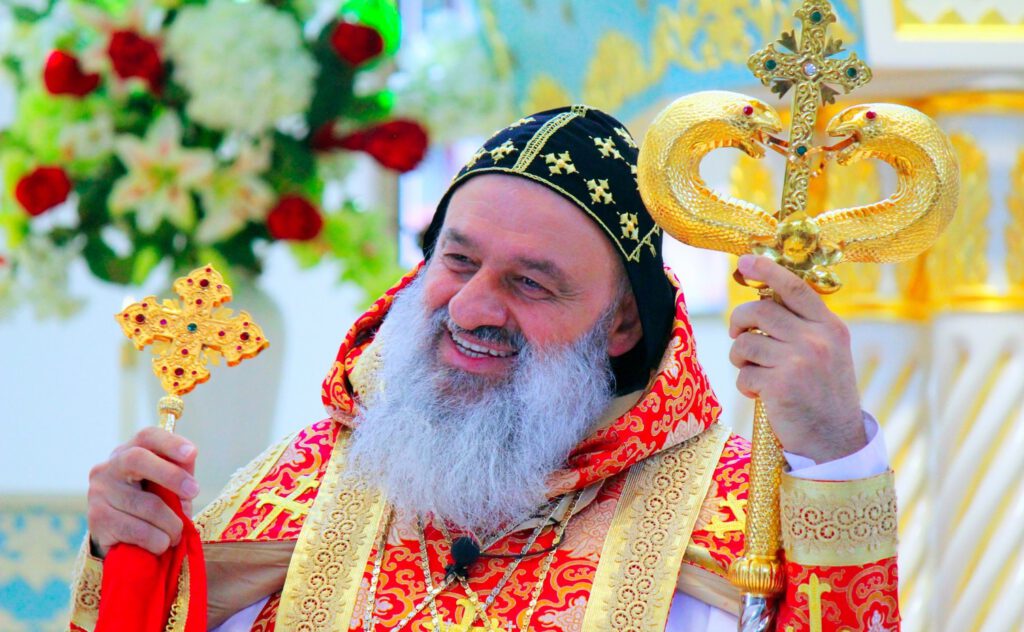
Seine Heiligkeit Moran Mor Ignatius Aphrem II. wurde am 03. Mai 1965 in Qamishli (Syrien) mit dem bürgerlichen Namen Said Karim geboren. Bereits in frühen Jahren verlor er seinen Vater und so sorgte sich die liebevolle Mutter Khanema um die Erziehung des Kindes. Nach Abschluss der Grundschulausbildung 1977 erfolgte der Eintritt in das St. Ephrem Theologieseminar in Atchaneh (Libanon). Quelle: https://syrisch-orthodox.org/der-patriarch/ Read more ...
H. E. Dr. Mor Theophilose Kuriakose
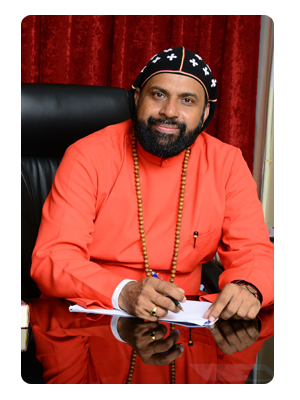
H. E. Dr. Mor Theophilose Kuriakose was born on 1st February, 1966 in the Kodikuthiyil family of the Ooramana village (Ernakulum District, Kerala, India) to Mr. Cherian Varkey and Mrs. Saramma Varkey. His home parish is St.George Thabore Jacobite Syrian Church, Ooramana in the Kandanad Diocese.
His Grace did his schooling in Ooramana High School and graduation (B.A. Political Science) in St.Peter’s College, Kolencherry. In 1980, he successfully completed B.Th. from the Malankara Syrian Orthodox Theological Seminary, Udayagiri. In the meanwhile he was ordained as a Deacon by Late Lamented H.G. Mor Gregorious Geevarghese Metropolitan in 1989.
Later on he joined United Theological College in Bangalore for pursuing Bachelors in Divinity and fruitfully completed it in 1993. Afterwards he served as a lecturer in the Malankara Syrian Orthodox Theological Seminary, Mulanthuruthy (Ernakulam District) for around three years (1993-1995). Concurrently he functioned as the Organizing Secretary of the ‘Syrian Orthodox Christian Student Movement’. In 1995 he went to Germany for higher studies. In Germany, His Grace mastered in German and Latin languages from the Ostkirchliches Institute and also received Doctor of Theology at the Catholic Faculty of the University of Regensburg. His thesis was on “Den Armen gehoert das Reich Gotttes. Lukanische Impulse fuer ein Dalit Theologie”. In 2002 he returned to India and continued as a lecturer of the M.S.O.T Seminary.
On 12th November 2002 he was ordained as a priest and on 29th September 2003 he was consecrated as a Metropolitan by H.B. Aboon Mor Baselios Thomas I. Since then he serves as the Resident Metropolitan of M.S.O.T. Seminary, along with various other responsibilities in the church.
Responsibilities: Resident Metropolitan and Professor of the Malankara Syrian Orthodox Theological Seminary, India. Metropolitan and Patriarchal Vicar of the Malankara Syrian Orthodox church in Europe( Except UK & Ireland. President of the Ecumenical Office of the Malankara Syrian Orthodox Church. Chairman of the Media Cell of the Malankara Syrian Orthodox Church. Co-Chairman of the Catholic-Malankara Syrian Orthodox churches International Joint commission for Theological dialogue. Member of the Faith and Order Commission of the WCC. Member of the International Joint Commission for Theological Dialogue between Catholic and Oriental Orthodox churches. Member of the program committee of the Christian Conference of Asia. Central Committee member of the World Religions Forum Macedonia. Member of the Pro Oriente Forum Syriacum and Forum Colloquium, Vienna. Central Committee member of the International Ecumenical Bishops Conference of Fokolare Movement Italy. Visiting Professor of Universities in Europe and USA.
Our Vicar
Fr. Dr. Thomas Jacob Manimala
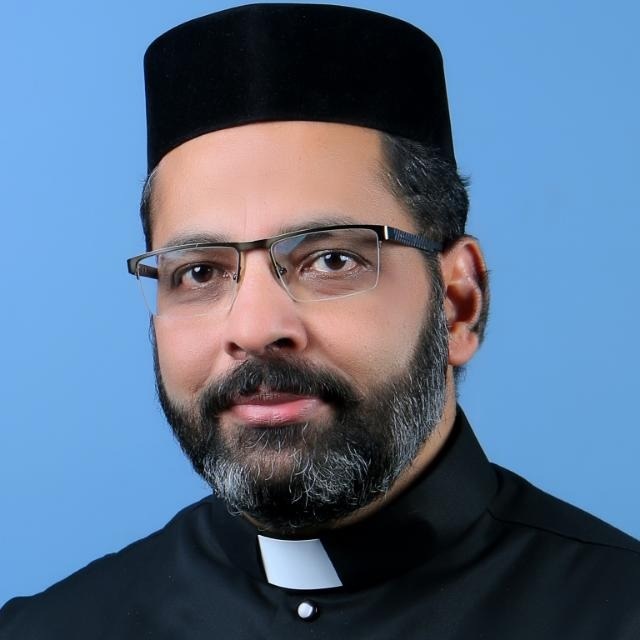
Our vicar Fr. Dr. Thomas Jacob Manimala has come to Germany in 1997 for pursuing his doctoral studies. After obtaining the doctoral degree from the Martin Luther university, Halle-Wittenberg, he was engaged in research in the area of Christian-oriental studies. He got ordained as priest by the late lamented H. E. Abraham Mor Clemis Metropolitan of the Knanaya Archdiocese in 2000. He has done his theological education from the United Theological College Banglore and from St. Ephrem ecumenical research institute (SEERI) Kottayam. He was very passionate from the very beginning of his stay in Germany in organizing the Jacobite Orthodox believers and establishing churches and congregations in Germany and Europe. Now he serves as the vicar of St. Mary’s Jacobite Church Munich, St. Mary’s Jacobite Church Herne, Jacobite Congregation in Berlin, St. Mary’s Knanaya Church Italy, St. Mary’s Knanaya Church Dublin, and the Knanaya Congregation in Brussel.
Fr. Thomas Manimala belongs to the Syrian Knanaya Archdiocese and his mother parish is St. John’s Dayara Church Chingavanam, Kottayam. Now Achan resides in Ampfing, Bayern, Germany with his family.
Main Menu
- Home
- About Us
- Our Prelates
- Our Vicar
- Spiritual Organizations
- Events & News
- Verein
- Parishes in Germany
Current Church News
-
Christmas Service 2023
The Christmas Service will be held on 25th December at 1:30 pm followed by the Christmas Dinner and Carol Service.
-
Next Holy Qurbono
The Holy Qurbono is celebrated on every first, second and third sunday at 1:30 pm.
Pfarrkirche St. Florian, Platz der Menschenrechte 2, 81829 München
-
Good Samaritan Mission
Guests Online
We have 112 guests and no members online

